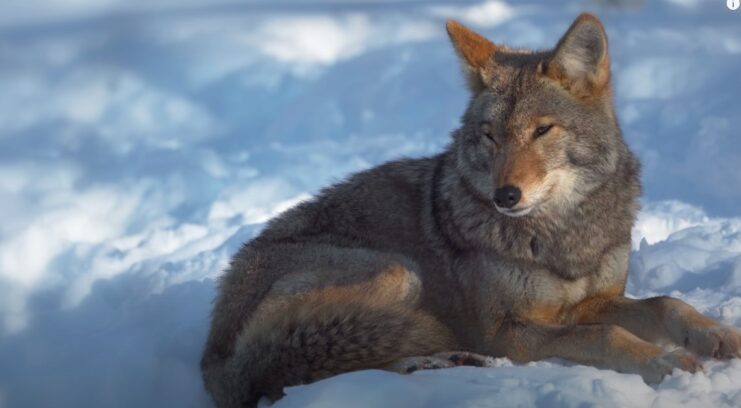The Arctic region, characterized by its extreme cold and ice-covered landscapes, is home to a unique array of wildlife.
Understanding the adaptations and survival strategies of these animals is crucial for appreciating the biodiversity of this harsh environment.
1. Polar Bear (Ursus maritimus)
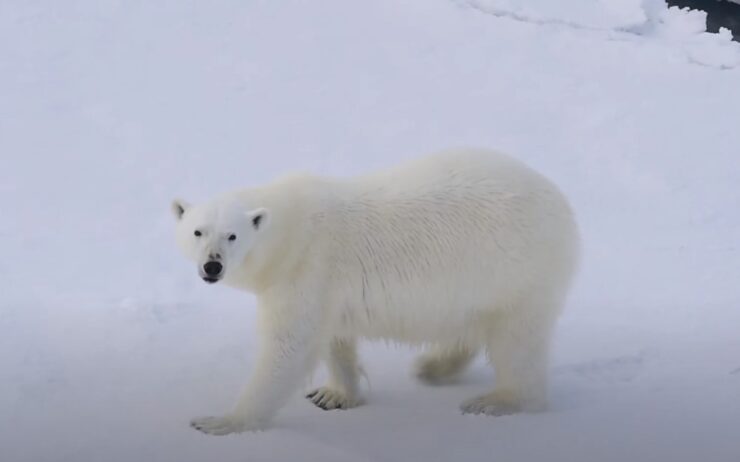
Polar bears are the largest land carnivores, with males weighing up to 1,500 pounds. Their white fur, black skin, and a thick layer of blubber provide insulation against the cold.
Polar bears are primarily found on the sea ice of the Arctic Ocean, where they hunt seals.
Characteristics:
- Large size and powerful build
- Thick white fur and blubber for insulation
- Sharp claws and teeth for hunting
- Excellent swimmers
They have an exceptional sense of smell, capable of detecting seals nearly a mile away and beneath several feet of compacted snow.
Conservation efforts are crucial as they face threats from climate change and melting ice habitats.
2. Arctic Fox (Vulpes lagopus)
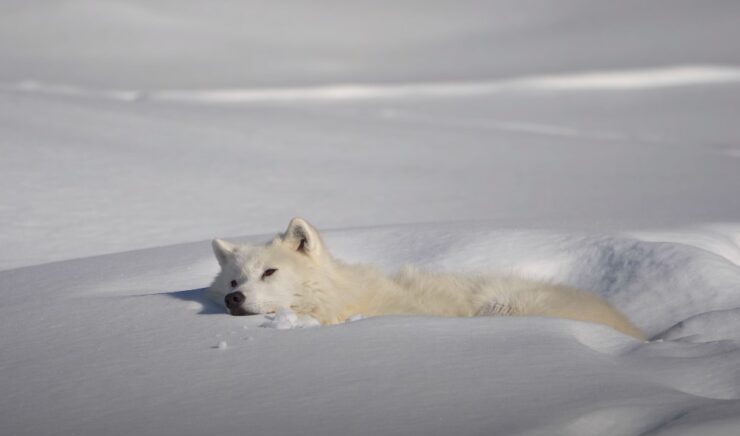
The Arctic fox is a small, adaptable mammal known for its thick fur that changes color with the seasons.
During winter, their fur is white to blend in with the snow, while in summer, it turns brown or grey.
Characteristics:
- Seasonal fur color change
- Short ears and snout to minimize heat loss
- Bushy tail for warmth and balance
They inhabit tundra regions across the Arctic, including Alaska, Canada, and Greenland. Their diet is varied, consisting of lemmings, birds, and fish, and they are known for their resourcefulness in scavenging food.
Despite their adaptability, Arctic foxes face threats from climate change and competition from red foxes.
3. Beluga Whale (Delphinapterus leucas)
Beluga whales are small, white cetaceans known for their distinctive color and vocal abilities.
They inhabit the Arctic and sub-Arctic regions, where they are found in coastal waters and rivers.
Characteristics:
- White coloration for camouflage in ice
- Flexible necks allowing head movement
- Social and vocal with a wide range of sounds
Belugas migrate seasonally, moving to warmer estuaries and rivers in the summer.
They are highly social, often found in pods, and communicate using a variety of clicks, whistles, and clangs. Conservation concerns include habitat loss, pollution, and climate change.
4. Narwhal (Monodon monoceros)
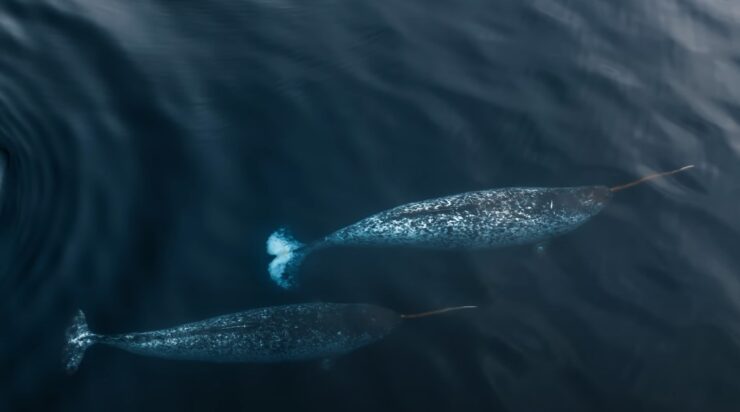
Narwhals are medium-sized whales recognized for the long, spiral tusk protruding from the males’ heads, which is actually an elongated tooth.
They are found in the Arctic waters of Canada, Greenland, Norway, and Russia.
Characteristics:
- Long, spiral tusk up to 10 feet in males
- Grey and white mottled skin
- Deep divers, reaching depths of over 1,500 meters
Their diet primarily consists of fish, squid, and shrimp. Narwhals are known for their deep diving capabilities, reaching extreme depths to hunt.
Conservation status is concerning due to climate change, oil and gas exploration, and hunting.
5. Arctic Hare (Lepus arcticus)
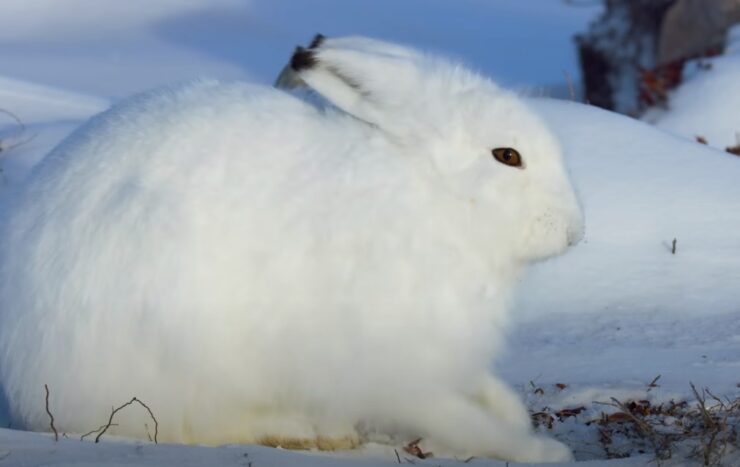
Arctic hares are well-adapted to the cold, with thick fur that turns white in winter for camouflage and grey-brown in summer.
They have large hind legs that help them move quickly over snow.
Characteristics:
- Seasonal fur color change
- Large hind legs for fast movement
- Thick fur for insulation
They inhabit the tundra regions of the Arctic, surviving on woody plants, mosses, and lichens.
Arctic hares are solitary but can be seen in groups during the breeding season. Their primary threats include predation and habitat changes due to climate change.
6. Caribou (Rangifer tarandus)
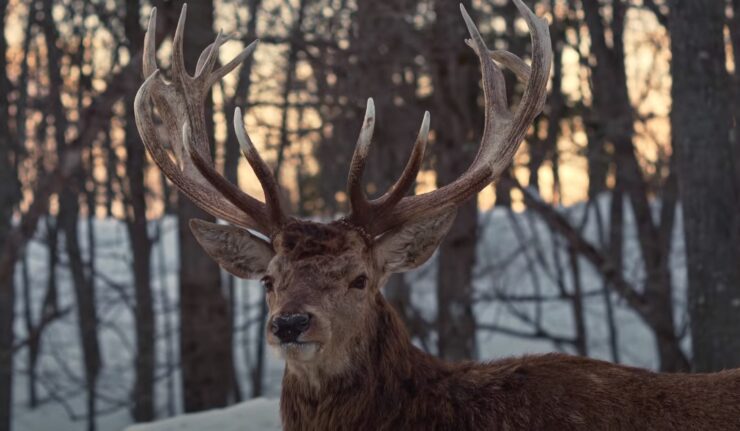
Caribou, also known as reindeer in Europe, are well-adapted to the Arctic environment. They have large hooves for walking on snow and soft ground, and their fur is dense and insulative.
Characteristics:
- Large, concave hooves for snow and soft ground
- Thick, insulating fur
- Males and females both have antlers
Caribou undertake long migrations, covering up to 3,000 miles annually, moving between summer and winter ranges.
Their diet includes grasses, lichens, and leaves. Caribou face threats from habitat loss, climate change, and industrial development.
7. Musk Ox (Ovibos moschatus)
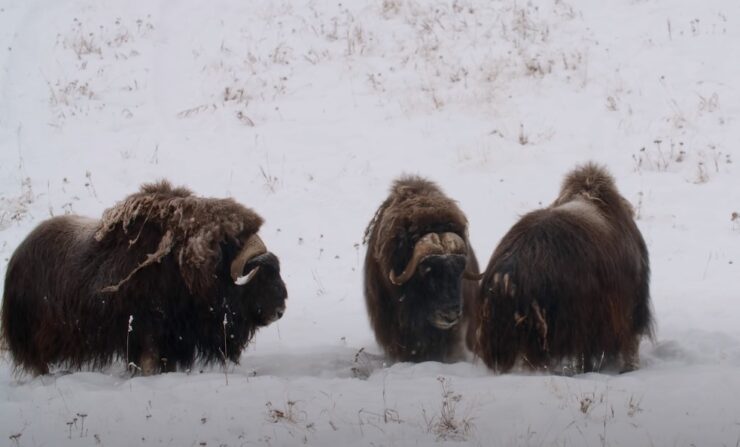
Musk oxen are large, shaggy mammals known for their thick coat and strong social structure. They have a unique adaptation in their fur, which consists of long guard hairs and a soft undercoat called qiviut.
Characteristics:
- Long, shaggy fur and dense undercoat
- Large, curved horns
- Strong social structure in herds
They inhabit the tundra and prefer areas with wind-swept ridges where snow is less deep.
Musk oxen graze on grasses, Arctic willows, and mosses. Their population faces threats from climate change and human disturbances.
8. Walrus (Odobenus rosmarus)
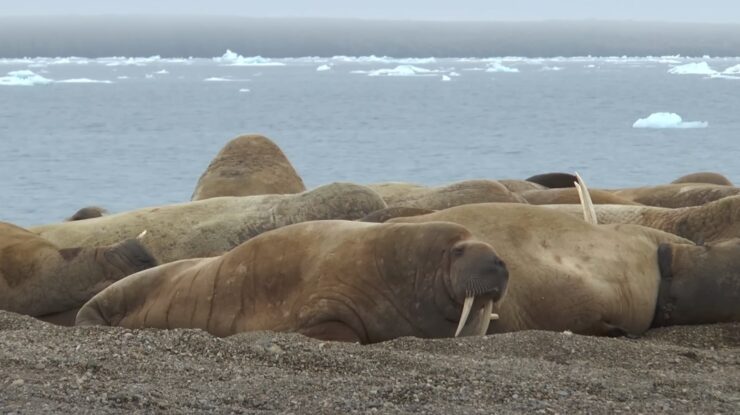
Walruses are easily recognized by their long tusks, whiskers, and bulk. They inhabit ice-covered waters and coastal areas in the Arctic.
Characteristics:
- Long tusks used for defense and ice climbing
- Thick blubber for insulation
- Whiskers (vibrissae) for detecting prey
Walruses feed on benthic organisms like clams, snails, and worms. They are social animals, often found in large groups on ice floes.
Conservation issues include habitat loss due to melting ice and increased human activity in the Arctic.
9. Snowy Owl (Bubo scandiacus)
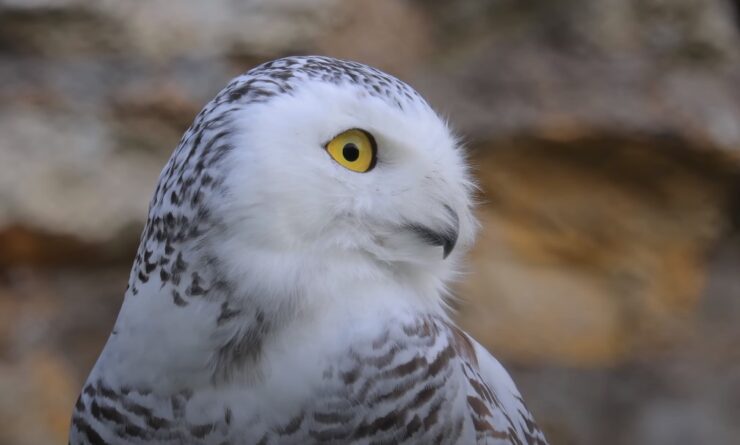
Snowy owls are large, white owls with striking yellow eyes. They are adapted to cold climates with their thick feathers and keen hunting skills.
Characteristics:
- White plumage for camouflage
- Sharp talons and beak for hunting
- Keen eyesight and hearing
They inhabit the Arctic tundra, hunting for lemmings and other small mammals. Snowy owls are known for their nomadic behavior, moving to areas with abundant prey.
Conservation concerns include habitat changes and prey availability.
10. Wolverine (Gulo gulo)
Wolverines are powerful and resilient predators with a reputation for strength and ferocity. They have a stocky build, thick fur, and strong jaws.
Characteristics:
- Stocky build with powerful limbs
- Thick fur for insulation
- Strong jaws and sharp claws
Wolverines inhabit remote Arctic and sub-Arctic regions, where they hunt and scavenge a variety of prey.
They are solitary animals with large home ranges. Conservation status is threatened by habitat fragmentation and climate change.
The Bottom Line
The Arctic animals exhibit remarkable adaptations that enable them to survive in one of the harshest environments on Earth. If you wonder, penguins are not on the list because they live mostly in Antarctica.
Protecting these species through conservation efforts is vital for maintaining the biodiversity and ecological balance of the Arctic region.

